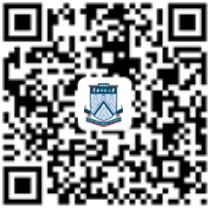A Reinterpretation of the Value of the 1932 Debate on Liberal Literature and Art
-
摘要: 1931年底,新创刊的《文化评论》拒绝为国民党当局的“民族文艺运动”张目,提出“文学与艺术,至死也是自由的”。这一说法引起左翼阵营的反应,一场“自由是否为文艺之基本价值”的论争在“自由人”与左翼阵营之间展开。之后,“第三种人”介入,自称代表“作者之群”发言,请求论争双方给文学放一条生路。那是1930年代初期新文学发生价值转向之际的一场大辩论。论争几方各有道理,谁也说服不了谁。重读这段历史可发现,“文艺自由论”并非如后来教科书所说的败阵下来,而是略占上风,至少是平局。至此,新文学的多元格局真正形成。Abstract: At the end of 1931, the new-born journal Culture Review refused to advocate "national literature and art"; instead it proposed that "literature and art are free unto death". The debate on whether freedom was the basic value of literature arose between the "free man" and the left wing. Soon the so-called "the third type of person" joined the debate, claiming they spoke for "the group of authors", asking both sides to spare the life of literature. The debate happened at the point of the value transition of the New Literature in 1930s, and neither side, with their respective arguments, could persuade the other. Rereading the process of this debate, it can be seen that the side of "liberal literature and art" was not defeated, as said in some textbooks' narrative. In fact, it even had an upper hand for some time, or at least the debate ended in a tie. A careful reexamination of the debate is conducive to understanding the multiple structure of the new literature in the 1930s, the essential basis that each of the parties held for its argument and the later developments of the May 4th new literature tradition.
-
在新中国成立前的三千多年里,中国传统农业社会曾爆发大小疫情500多次,却没有一次疫情引发全国性的经济衰退。1918年春至1919年夏发生的所谓“西班牙大流感”,在全球三次连续的传染潮中导致1亿人死亡,但也没有导致全球性的经济大衰退。2020年的新冠疫情远没有1918—1919年“西班牙大流感”那样惨烈(截至2020年11月30日,全球累计确诊人数超过6 293万,累计死亡人数超过145万),却引发了全球严重的经济衰退;而美国陷入自第二次世界大战以来最为严重的经济衰退,即超过了2007—2009年的大衰退。一些西方经济学家或企业家将其称为大萧条,如2018年诺贝尔经济学奖得主保罗·罗默将美国2020年的经济衰退等同于1930年代的大萧条。本文则称之为打引号的“新冠疫情大萧条”,意在区别于1929—1933年大萧条,同时含有这种“大萧条”虽直接由新冠疫情引发,但其根本原因并不是新冠疫情之意。因此,本文要讨论的问题是:美国2020年“大萧条”是根源于新冠疫情呢,还是即使没有新冠疫情也会发生?
一. 新冠疫情并不必然导致“大萧条”
从理论上说,现代工业的高度专业化分工和大规模生产,将商品生产与商品交换普遍化,从而市场经济与现代工业具有共生性。因此,现代工业社会与传统农业社会的显著区别在于:前者是以市场为中心(生产与消费分裂)的生产方式和生活方式,从而以市场主体为单位形成全国性供给链和需求链,将一国生产与消费连成一个整体,并且各国基于动态比较优势参与国际分工,所形成的全球性供给链和需求链,将各国的生产与消费连成一个整体,即经济全球化;后者则是以土地为中心(生产与消费合一)的生产方式和生活方式,商品交换处于这种生产与生活方式的边缘,从而以自给自足的家庭为单位,在广袤土地上分散、独立和封闭地进行小规模经营。显然,在中国传统的农业社会,以土地为中心的生产方式和生活方式,成为阻隔疫情在全国范围蔓延的“城墙”。而在现代工业社会,以市场为中心的生产方式和生活方式,却成为疫情在全国范围乃至世界范围内的传播链。要想阻止疫情在全国乃至世界范围内传播,就必须在一定时间一定范围内中断这种生产和生活方式,或者使用药物和疫苗有效控制疫情。而发生于第一次世界大战中的1918—1919年“西班牙大流感”,因参战国政府为赢得战争、未参战国为发战争财而都未采取隔离措施,因此,疫情虽未直接导致全球性的经济衰退,但死于疫情的全球人数远超过因第一次世界大战而死亡的人数。
新冠肺炎通过人传人的方式大流行,直接威胁着人们的生命。在尚无有效药物和疫苗控制疫情的情况下,控制新冠疫情的最有效方式就是隔离,即在一定时间一定范围内中断群体性生产方式和生活方式。虽然,中国在采取非常措施严控新冠疫情期间,经济一度出现负增长,但由于所采取的措施及时、有效,并坚持常态化的应对疫情措施,经济在2020年第二季度就恢复正增长,且正增长势头稳定。中国的情况充分表明,只要防控措施及时、有效,新冠疫情并不必然导致“大萧条”。美国历史上有过一个与中国相似的例证。在1918年西班牙流感大流行时,美国从波士顿到费城、从阿拉斯加州到德克萨斯州的东西两岸都遭到流感病毒的侵袭。但是,一个名为甘利森的农业采矿小镇(位于科罗拉多州)却幸免于难,成为唯一没有感染者的城镇。甘利森有居民1 300人,此外,还有两趟火车每日从疫情严重的丹佛市抵达这里,它宣布对进入该镇的人进行隔离,并修建路障,关闭学校和教堂,禁止聚会和公众会议,这种全面隔离持续4个月,结果奏效了。然而,在当下的现实中,特朗普为了在2020年11月的总统大选中获胜而连任,自2017年上台后,就竭力采取各种刺激经济的措施以维持美国经济的虚假繁荣(下文将详细论及),自然绝不允许因控制疫情而毁掉这种虚假繁荣的局面。特朗普将一己私利凌驾于数亿美国人民的生命之上,用各种谎言掩盖其放任新冠疫情的真实意图,使美国失去了控制疫情的最佳窗口期,结果美国既没有控制住疫情①,经济又跌入“大萧条”,特朗普连任也成为一枕黄粱。
二. 马克思论经济周期与反周期政策
资本主义社会自1825年爆发第一次经济危机以来,基本上每隔一段时间就会爆发一次经济危机,从而形成繁荣与衰退的经济周期。引发每次衰退的直接原因虽各不相同,但所有的衰退都有一个共同点,那就是基于高杠杆(高负债率)的债权债务链断裂。具体来说,市场经济是一种信用经济,也就是说绝大多数交易都不是现金交易,而是信用交易,即基于契约卖者先让渡商品所有权,在约定期限收款才完成交易,买者则先获得商品所有权,在约定期限付款以完成交易。在这个过程中,货币不充当流通手段,只充当支付手段。在数以千万计的企业相互采用信用交易时,每一个企业既是多家企业的卖者,又是多家企业的买者,每一个企业也就既拥有多家企业的债权,又欠有多家企业的债务,由此,在市场经济中就形成了庞大的债权债务链。每一个企业必须按预定的时间生产出产品,并按预定的时间出售产品获得现金(马克思称为“货币或资本回流”),才能按期付款以完成信用交易。繁荣时期,在任何一个时点上,都存在真实信用交易(而不是投机性信用交易)正常的还款和欠款;但追逐利润往往导致真实的信用交易突破有效需求的限制,产生债权债务风险,而投机性信用交易往往导致债权债务泡沫化,一旦泡沫破灭则会导致债权债务链断裂,繁荣的经济就会突然跌入衰退。通过破产、兼并和固定资产的更新,信用交易随经济复苏而恢复;而随着信用交易扩张并主导市场,经济又进入繁荣期。如此循环而形成经济周期。
马克思对经济周期进行了深入的理论分析。马克思认为,“随着商品流通的发展,使商品的让渡同商品价格的实现在时间上分离开来的关系也发展起来”,“一个商品占有者出售他现有的商品,而另一个商品占有者却只是作为货币的代表或作为未来货币的代表来购买这种商品。卖者成为债权人,买者成为债务人。由于商品的形态变化或商品的价值形式的发展在这里起了变化,货币也就取得了另一种职能。货币成了支付手段”[1]158-159。货币在商品交换中充当支付手段而不是流通手段,就会在市场交换中形成信用关系。“债权人或债务人的角色在这里是从简单商品流通中产生的。简单商品流通形式的改变,在卖者和买者身上打上了这两个新烙印。”[1]159
马克思认为,随着商业和只是着眼于流通而进行生产的资本主义生产方式的发展,“信用制度的这个自然基础也在扩大、普遍化、发展”[2]450。基于产业资本再生产过程,马克思对信用的普遍化进行了具体分析。在马克思看来,在产业资本再生产过程中,资本会依次采取货币资本、生产资本和商品资本的形式循环。分工会使产业资本的三种形式,即货币资本形式、生产资本形式和商品资本形式分别独立为货币经营资本、生产经营资本和商品经营资本,并相应形成货币资本家、产业资本家和商业资本家。在他们之间的交易中,货币往往只是充当支付手段。也就是说,“商品不是为取得货币而卖,而是为取得定期支付的凭证而卖。为了简便起见,我们可以把这种支付凭证概括为票据这个总的范畴。这种票据直到它们期满,支付日到来之前,本身又会作为支付手段来流通;它们形成真正的商业货币。就这种票据由于债权和债务的平衡而最后互相抵消来说,它们是绝对地作为货币来执行职能的,因为在这种情况下,它们已无须最后转化为货币了。就像生产者和商人的这种互相预付形成信用的真正基础一样,这种预付所用的流通工具,票据,也形成真正的信用货币如银行券等等的基础。真正的信用货币不是以货币流通(不管是金属货币还是国家纸币)为基础,而是以票据流通为基础”[2]450-451。因此,马克思将市场交易中的信用分为两大种类,即商业信用与银行信用。以票据流通为基础的信用交易属于商业信用。由于“每一个人都是一手接受信用,另一手给予信用”[2]586,故商业信用一般都是无息的。而随着银行制度的发展,银行家以货币资本的实际贷出者与借入者之间的中介人的身份,以商业信用为基础发放不同形式的贷款,如以有息证券、国债券、各种股票作抵押的贷款,特别是以提单、栈单及其他各种证明商品所有权的凭证作抵押的贷款,就是必须付息的银行信用。商业信用和银行信用加快了商品形态变化的各个阶段,加快了资本形态变化的各个阶段,进而使整个再生产过程加快。同时,由于银行信用,生产规模惊人地扩大,并出现个别资本不可能建立的大型股份公司。另外,由于信用使买和卖的行为可以互相分离较长的时间,因而也成为投机的基础。特别是银行信用,是“使资本主义生产超出它本身界限的最有力的手段,也是引起危机和欺诈行为的一种最有效的工具”[2]686。在马克思看来,“如果说信用制度表现为生产过剩和商业过度投机的主要杠杆,那只是因为按性质来说具有弹性的再生产过程,在这里被强化到了极限”[2]499-500。因此,繁荣时期,即“在再生产过程大大扩张、加速并且充满活力的时候”,也就是“信用最具弹性和最易获得的时期”[2]506-507。而“在信用活跃的时期,货币流通的速度比商品价格增加得快”[2]508。但是,在危机时期情况正好相反,在回流实际上已经消失以后,总是会由于已经发生作用的信用,在较长时间内保持下去,从而信用回流过程掩盖了已中断的实际回流。但是,只要银行的客户付给银行的汇票多于货币,银行就会意识到回流的风险而紧缩信用。从而“在危机中,因为每个人都要卖而卖不出去,但是为了支付,又必须卖出去,所以,正是在这个信用最缺乏(并且就银行家的信用来说,贴现率也最高)的时刻,不是闲置的寻找出路的资本,而是滞留在自身的再生产过程内的资本的数量也最大。这时,由于再生产过程的停滞,已经投入的资本实际上大量地闲置不用”[2]547。在马克思看来,“一切现实的危机的最后原因,总是群众的贫穷和他们的消费受到限制,而与此相对比的是,资本主义生产竭力发展生产力,好像只有社会的绝对的消费能力才是生产力发展的界限”[2]548。
总之,在马克思看来,“在再生产过程的全部联系都是以信用为基础的生产制度中,只要信用突然停止,只有现金支付才有效,危机显然就会发生,对支付手段的激烈追求必然会出现。所以乍看起来,好像整个危机只表现为信用危机和货币危机。而且,事实上问题只是在于汇票能否兑换为货币。但是这种汇票多数是代表现实买卖的,而这种现实买卖的扩大远远超过社会需要的限度这一事实,归根到底是整个危机的基础”[2]555。“这种产业周期的情况是,同样的循环一旦受到最初的推动,就必然会周期地再现出来。”[2]554
马克思以英国政府的1844年银行法为例,分析了政府的反危机政策。1844年的银行法规定英格兰银行下设两个部门:发行部和银行信贷部。发行部按所持有的担保品总额(绝大部分是政府债券加上贵金属)发行等额的银行券,从而以金交换公众手里的银行券并以银行券交换公众手里的金,以调节银行券在流通中的数量;银行信贷部则利用发行部发行的银行券和客户存款,从事与一般商业银行一样的业务以获取利润。这意味着英格兰银行“作为国家银行和私人银行之间的奇特的混合物,事实上有国家的信用作为后盾……银行券在不同程度上是合法的支付手段”[2]454,“这等于取得了造币的特权”[2]455。在大多数国家里,发行银行券的主要银行都是这种英格兰银行模式。然而,英格兰银行在1847年的经济危机中因“1844年银行法加给它的种种限制而濒于破产”[2]460。英国政府不得不在1847年“10月25日宣布暂停执行银行法,从而解除了那些加给英格兰银行的荒谬的法律限制”[2]460。这样,该行不以法定准备金作为保证,就可以发行任何数量的银行券,贷给各个银行和各个票据经纪人,并且通过他们贷给商业界。由此,“货币紧迫的情况立即得到了决定性的缓和……危机的顶点过去了……一个新的营业活跃期就已准备就绪……并在50年代先是导致了前所未有的工业繁荣,然后又引起了1857年的崩溃”[2]460。在1857年的危机中,英格兰银行又得到暂停执行1844年银行法的“政府信函”,从而又一次决定性地缓和了危机。所以,马克思说,“这个银行法并没有消除危机,反而使危机加剧了,以致达到了不是整个产业界必然破产,就是银行法必然破产的程度。危机曾两次(一次在1847年10月25日,一次在1857年11月12日)达到这个高度;当时政府暂停执行1844年的法令,解除了银行在发行银行券上所受的限制,而这个办法已经足以打破了两次危机”[2]629。但是,马克思强调指出,“这种强行扩大再生产过程的全部人为体系,当然不会因为有一家像英格兰银行这样的银行,用它的纸券,给一切投机者以他们所缺少的资本,并把全部已经跌价的商品按原来的名义价值购买进来,就可以医治好”[2]555,虽然每当遇到危机时,英格兰银行增发信用货币“这个办法总是被作为惟一的救急手段来使用”[2]585。
到这里我们不难看到,虽然马克思所处的时代不存在中央银行,但现代中央银行及其所推行的逆周期政策,无疑源于历史上“作为国家银行和私人银行之间的奇特的混合物”的英格兰银行之类的一些银行;虽然现代市场经济远比马克思所处时代的市场经济发达,但仍然是一种信用经济,只是债权债务链更为复杂。因此,马克思基于信用形成的债权债务关系考察经济周期和反周期政策,为我们探讨2007—2009年大衰退与“新冠疫情大萧条”之间的关系提供了一个科学的分析框架。
三. “新冠疫情大萧条”源于2007—2009年大衰退
根据马克思关于商业信用和银行信用形成的债权债务链及反周期货币政策(国家信用)的论述,可以揭示美国2007—2009年大衰退与2020年“大萧条”之间的关系。
美国2007年8月至2009年6月的大衰退,开始于次贷危机引发的非银行金融机构危机,进而引发银行金融机构危机并扩散到实体经济,历经近两年的时间,是百年一遇的金融大海啸。因仅次于1929—1933年大萧条,被称为大衰退。在这里有必要对大衰退的历史做一个简要的回顾。
为避免2000年美国股市崩盘引发严重的经济衰退,美联储自2001年1月3日开始降低基准利率,并将减息的势头持续到2002年底,从而使基准利率由6.5%降至1.25%。2003年6月25日美联储又将基准利率由1.25%降至1%,并将这一自美国20世纪50年代以来的最低利率水平维持了近一年,其直接目的是避免债权债务链断裂。但是,低利率释放的大量资金流向了自1997年以来就一直房价飙升的房地产市场,从而形成房价只涨不跌的态势。到2003年7月,房地产市场已是泡沫泛起,从而吸引更多的资金进入房地产市场投机。到2003年底,房地产市场信贷膨胀导致贷款总额高达31万亿美元,是美国GDP的3倍。差不多人人都办理了房屋抵押贷款,有的高达房屋价格的89%。
美国次级贷款市场主要面向信用分数低于620分、收入证明缺失和负债重的600万穷人和新移民,这类客户在正常情况下往往难以获得贷款。但是在2003年下半年起,次级贷款市场向这类人群以极低的可调利率提供购房贷款,即次级抵押贷款。如果问题仅仅限于次级抵押贷款,或者说信贷膨胀仅仅限于次级抵押贷款层面,那么,即使发生次贷危机,也只是类似于美国1985—1989年的储贷危机,当时政府仅以不到1 500亿美元用于挽救倒闭的储贷机构的“财政援助”就防止了债权债务链的断裂。但是在次贷危机中,即使美国政府将以万亿美元计的救市资金堆砌成“防火墙”,也挡不住次贷危机席卷美国的非银行金融机构和银行金融机构,并且迅速向全球蔓延,其原因完全在于包括次级贷款在内的各种债务的证券化。具体来说,在实际操作中,往往不是先有次级贷款,然后再证券化为债券上市,而是先由华尔街的投资银行向次贷公司下订单购买次级贷款,然后由次贷公司按订单“批量生产”次级贷款。由于按订单“批量生产”的次级贷款获得一定利差后连风险带收益一并转让给了华尔街投资银行,次贷公司几乎不承担任何风险,而且仍然因负责贷后管理而收取手续费。因此,为了满足华尔街投行的需要,次贷公司的贷款成数不断提高,早期的七成贷款模式迅速扩大到八成贷款、九成贷款,甚至推出零首付、零信用记录和个人收入文件的贷款。然后,投资银行将收购的次级贷款分类与商业票据(三个月的贷款)打包制成债务抵押债券(CDO),也就是所谓高科技打造的金融衍生品,再由穆迪等利益相关的评级公司评定为AAA等级以上市出售给美国大型投资机构,如退休基金、保险基金和政府基金。这样,基于根本不可能还贷的次级贷款形成了一个完整的产业链或相互依存的债权债务链。必须指出的是,资产与债务,或者说债权与债务,犹如一块硬币的两面无法分开。将债权债务关系证券化(将抵押贷款分割成现代金融中极其复杂的金融衍生产品),既可以称之为债务的证券化,也可以称为债权或资产的证券化。但是,西方金融界仅从债权人的角度,将债权债务关系的证券化称为资产的证券化,具有很大的欺骗性。因为资产证券化的提法,完全屏蔽了所衍生出的房贷抵押债券的债权债务关系及其存在的风险。只有当次级贷款衍生出的庞大债权债务关系出现违约时,人们才发现次级贷款证券化或衍生的资产是“有毒资产”,是庞氏骗局。
在美国,支撑房价走高的主要因素是美联储的长期低利率政策所导致的流动性过剩。在通货膨胀压力下,美联储不得不从2004年6月30日开始提高基准利率和贴现率,直到2006年6月29日的最后一次提高基准利率和贴现率为止,共加息17次,使基准利率由1%上升至5.25%,贴现率由1.5%上升至6.25%,试图使为应对2001年经济衰退而制定的宽松货币政策逐渐正常化。随着利率上调,次级房贷者因房价大跌与可变利率上升而无力还贷,而投资者不再购买甚至抛售证券化资产。资金从次贷债券市场流向石油、黄金和大宗商品市场,造成次贷债券市场的流动性枯竭,从而在2007年8月初引发了次贷危机。随着次级抵押债券市场问题的出现,美联储开始下调利率。但房贷抵押债券的大量抛售,使华尔街五大投资银行处于债权债务链断裂的系统性风险之中。在投行中排名第四的雷曼兄弟公司在2008年9月16日倒闭成为美国次贷危机的一个重大转折点,危机随之迅速从房地产市场扩展到美国的整个金融体系,次贷危机因而演变为金融危机。背负近5万亿美元债务的政府担保机构房利美和房地美难以为继;美国国际集团这一全球性保险公司因接受了大量债务抵押债券的投保而面临破产;美国银行业的三大巨头(花旗银行、美国银行和富国银行)都深陷困境,尤其是被称为全球最大银行的花旗银行的股票被大量抛售,股价从2007年6月的50美元以上跌至2008年11月的3.77美元,到2009年2月11日,花旗股价跌至1.6美元。继美国银行业陷入危机之后,曾是美国制造工业象征的汽车产业也走到了山穷水尽的地步。美国汽车产业的“三巨头”——通用、福特和克莱斯勒不仅出现巨额亏损,而且面临现金流枯竭。而之所以陷入这种困境,除自身未能适应高油价时代的挑战外,主要是金融危机向实体经济扩散的必然结果。金融危机使汽车产业无法获得银行信贷,从而成为压垮美国汽车业的最后一根稻草。[3]222-233
面对这些“太大不能倒”的非银行金融机构和银行金融机构,美国政府吸取了20世纪30年代在私人资金枯竭的情况下不愿提供国家信用而造成大萧条的教训,首先由存款保险机构宣布全额担保银行存款,以防止出现大规模挤兑现象;然后,大量投入财政资金和美联储贷款救助这些“大而不能倒”的金融机构。到2008年12月,美联储的基准利率下降到0—0.25%,显然基准利率已不能再下调, 传统的货币政策已经用尽。美联储开始实施“大规模资产购买计划”(QE)这一非传统的货币政策,即大规模购买国债和企业债券。大规模资产购买计划推行了三轮:第一轮于2009年3月开始实施(QE1),第二轮自2010年11月开始实施(QE2),此后还有过几次额外的资产购买,被称为第三轮资产购买计划(QE3)。美联储直到2014年10月29日才结束“大规模资产购买计划”,而其基准利率从2008年12月到2015年12月16日一直维持在0—0.25%的水平。
由此就产生了一个奇特的现象:美国政府宣布大衰退结束于2009年6月显然与美国政府将高强度的救市措施一直延续到2015年的事实不相符;但是美国经济确实从2009年7月恢复正增长后,一直持续到2020年1月,经济增长长达128个月。弄清这两个相互矛盾的现象,我们就可以找到“新冠疫情大萧条”与2007—2009年大衰退之间的联系。
众所周知,凯恩斯提出的反周期政策是在危机期间采取财政赤字政策和半通货膨胀货币政策(即物价水平不变,相对价格上升)。之后,凯恩斯主义者发展为完整的反周期政策,即在危机时期采取财政赤字政策和货币宽松政策(降低利率但不能为0);在繁荣时期采取财政盈余政策和货币紧缩政策。这样,在一个周期内“烫平”宽松与紧缩的财政、货币政策而实现平衡。在2007—2009年大衰退之前,美国反周期的货币政策基本上能做到危机时期下调基准利率,繁荣时期上调基准利率到5%—6%,从而使基准利率在下一个危机时期有下调的空间。但是,在2007—2009年大衰退中,美国反周期的货币政策发生了根本变化。
在2007—2009年大衰退期间,美联储自2008年12月起,将基准利率一直维持在0水平都难以启动经济正增长,不得不像弗里德曼所说的那样“用直升机撒钱”,即美联储从2009年3月起通过购买债券的方式直接向市场注入巨额的流动性,长达4个月后才在2009年7月实现经济正增长。按以前的正常操作模式,美联储应该在经济持续正增长的情况下停止撒钱,即停止第一轮大规模资产购买计划(QE1),并将基准利率从0—0.25%上调到5%—6%以防止形成另一个泡沫。但是,美联储在2009年7月实现正增长后,仍然继续实施第一轮大规模资产购买计划(QE1),并接着在2010年又实施QE2,继而再实施QE3,直到2014年10月29日才结束QE, 而0—0.25%的基准利率一直延续到2015年12月16日。从马克思的理论来看,美国经济始于2009年7月的正增长,并非因市场中的商业信用和银行信用恢复常态,而是由巨额的国家信用支撑着商业信用和银行信用运转的结果。
在美国经济持续正增长长达6年半的情况下,美联储终于按常规回调基准利率,启动“货币正常化”。2015年12月17日,美联储第一次提高基准利率25个基点,即从0—0.25%提高到0.25%—0.50%;一年以后,自2016年12月15日至2018年12月20日,按25个基点的升幅,先后8次提高基准利率,使基准利率达到2.25%—2.50%。显然,在长达三年的基准利率上调期(2015年12月到2018年12月),都未能将基准利率调升到5%—6%的正常水平(以前通常只需两年左右的时间就可以使基准利率回调到位),而且还是在特朗普政府2017年11月实施了《减税与就业法案》,永久性将公司税从35%减少至21%,以及适度降低个人税率的情况下进行的。所以,在2018年,西方一些经济学家和企业家在评述2008年全球金融危机10周年的文章中,都认为美国经济在2020年前后会陷入衰退。但是,没有一个人预测到新冠疫情及其引发的“大萧条”。
值得指出的是,在2008年至2019年中,美联储向市场注入的巨额流动性大量流向股票市场,而且美国公司从特朗普政府减税法案而获得的资金,往往用以大规模回购本公司股票,将股票维持在高价位上,以利于股东和高管获得高收入,公司盈利后首先想到的也不是投资,而是回购公司的股票。这样,就出现两种情况。一方面,虽然在大衰退中,美国股市相对于其2007年的高点下跌了50%以上,道指最低时为6 470点,但在2009—2019年,美国股市却牛气冲天。在20世纪90年代的10年时间里,美国股票市场的道指从3 000点升至10 000点,非理性的投资者都对道指将升至30 000点深信不疑(因为日本的日经指数在1989年底突破39 000点),但结果却是2000年的股市崩盘,在2009—2019年的10年时间里,美国股市39次打破记录,道指最高达到29 568点,非常接近30 000点的“美国梦”——一个巨大的股市泡沫在房地产泡沫破灭后形成,正像当年房地产泡沫在股市泡沫破灭后形成一样。诺贝尔经济学奖得主罗伯特·席勒认为,美国股市被严重高估40%,将不可避免地发生剧烈修正。
另一方面,即使基准利率上调不到位,市场主体也难以承受以2.25%—2.50%的利息利用国家信用,这充分表明商业信用和银行信用未能恢复到正常状态。为了不危及经济的正增长,美联储在2019年7月31日降低基准利率25个基点,从2.25%—2.50%降低到2%—2.25%。接下来,在2019年9月19日和10月31日分别再降低25个基点,从而使基准利率降低到1.5%—1.75%。
将上面两方面的情况结合在一起,则不难看出:经济的正增长要靠加大国家信用投入才能维持;而增大的国家信用资金却大量流入股市,导致股市泡沫进一步膨胀。如此循环,股市泡沫的破裂只是时间问题,从而会再一次陷入衰退。
2020年2月,美国爆发的新冠疫情结束了美国自2009年7月以来的经济扩张而陷入经济衰退。3月8日,美国股市第一次熔断②,3月9日第二次熔断,3月12日第三次熔断。三次熔断释放出股市泡沫破裂的强烈信号,美国财政部和美联储不得不推出无限量的救助措施,其速度之快、规模之大是历史上从未见过的。这也使得2020年的“大萧条”与2007—2009年的大衰退比较起来,在表现形式上并没有后者那样严重的根本原因。具体来说,美联储在股市第三次熔断后的3月14日,将基准利率降至0—0.25%,即恢复到2008年大衰退时的利率水平;在3月16日发生第四次股市熔断后,美联储月末推出无限量的资产购买计划(QE),即重操但又在量上不同于大衰退时期的做法,从而无上限购买国债和抵押债券、直接向个人和企业提供贷款、直接购买公司债等。这样,作为美国中央银行的美联储,实际上成为了一家商业银行。另外,美国政府在极短时间内出台2万亿美元的经济刺激法案,对企业、个人、医疗体系以及地方政府全方位财政救助起到托底的作用。股市泡沫至今都未破裂,显然是美国货币政策和财政政策救市的空前力度发挥了缓冲作用。但是,注入市场的巨额国家信用进一步膨胀了股市泡沫,从而在美国经济负增长的情况下,道指在2020年11月24日突破了3万点,达到30 046点。美国的股市不再是反映其经济活动的“晴雨表”,这早已是一个不争的事实。当美国企业采取“股权激励机制”后,企业CEO和股东的利益就与该企业股票价格捆绑在一起,为保障他们的利益不受损,就必须维持股票价格只升不降。为此,企业的利润首先要用来维持其股价的上升,即使没有利润,也要贷款来加以维持;股票不再仅仅是企业直接融资的方式,而是成为企业高管和股东攫取高收入的工具。而美联储和财政部在股市多次熔断的情况下,不直接购买股票而是向企业贷款,实际的效果都是一样的,即国家信用转化为企业贷款而进入股票市场。正因如此,在“大萧条”时期,道指才能在2020年11月24日突破3万点。马克思的信用理论告诉我们,国家信用在危机时期可以起到缓冲作用,但不可能从根本上解决危机问题。因此,即使美国政府能解决引发“大萧条”的非经济因素,即新冠疫情问题,也仍然要面对未被市场出清的巨额逾期债权债务,面对为商业信用和银行信用托底的国家信用所引致的一个有史以来存在时间最长、膨胀规模最大的股市泡沫。也就是说,“大萧条”不可能以V型形式结束。
综上所述,结论是显而易见的:美国“新冠疫情大萧条”是其2007—2009年大衰退的延续。在大衰退中,美国政府的国家信用为商业信用和银行信用托底所引致的一个有史以来存在时间最长、膨胀规模巨大的股市泡沫,即使没有发生新冠疫情也必然会破裂而引发危机。而在“大萧条”中,美国股市史无前例四次熔断(美国历史上仅在1987年发生过一次股市熔断),美国政府迅速以无限量的国家信用支撑商业信用和银行信用,衍生出膨胀规模更大的股市泡沫。在美国国债高达27万亿美元和美元从一盎司黄金兑换35美元贬值到一盎司黄金兑换2 070美元,以及美国经济早已空心化的当下,美国还能将其如此大的股市泡沫维持多久?!
① 从2020年1月21日报告首例病例以来,美国一直处于疫情高发期。截至2020年11月30日,美国累计确诊人数超过1 375万,累计死亡人数超过27万人。
② 美国股市熔断机制,是指在交易时段,当股指下跌到规定的百分数时,交易所将暂停交易以控制风险。
-
期刊类型引用(2)
1. 刘伟. 国际货币体系与世界经济金融危机的爆发——兼论人民币国际化战略选择. 华南师范大学学报(社会科学版). 2022(02): 83-92 .  百度学术
百度学术
2. 徐则荣,刘金. 资本主义经济周期性波动:特征、原因与影响及其对中国的启示. 政治经济学报. 2022(03): 14-28 .  百度学术
百度学术
其他类型引用(4)
计量
- 文章访问数: 642
- HTML全文浏览量: 555
- PDF下载量: 65
- 被引次数: 6






 下载:
下载:
